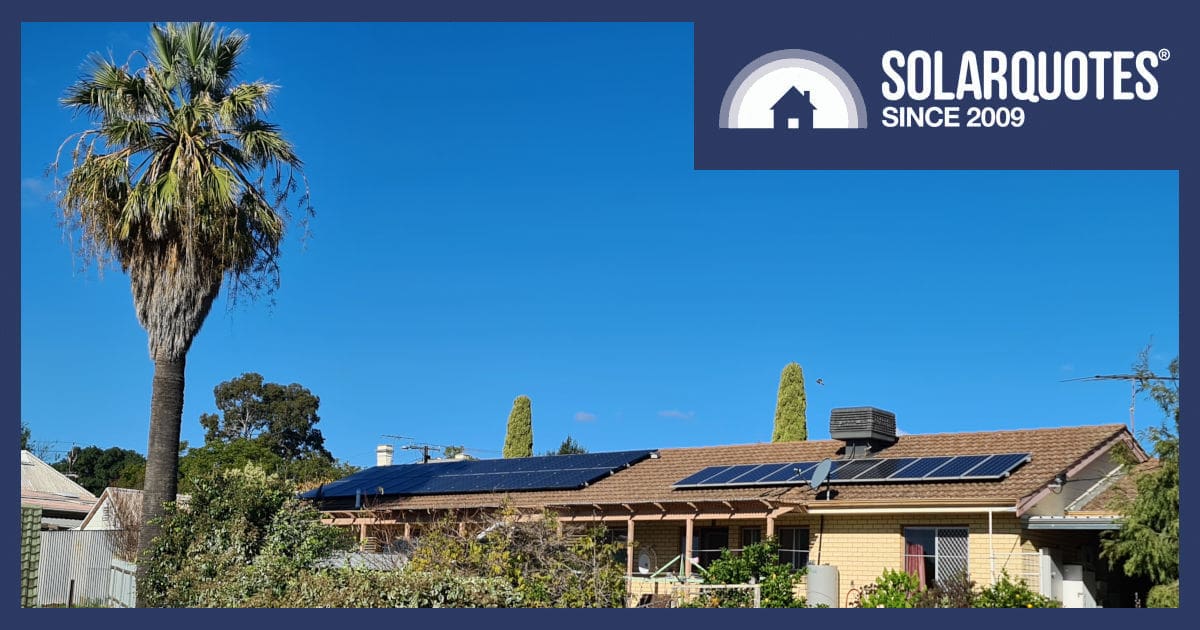

As we get deeper into autumn, the days are growing short and the shadows are growing longer — which is bad news for your solar if a massive palm tree happens to be positioned in the wrong spot. Here’s how an array set up in one season can be set up to fail for another.
The tricky thing about shade is that it is never where you left it: from hour to hour it is on the move, and from season to season too. For solar this is a huge headache: you can design a system to accommodate a system designed to account for summer shade conditions, only for all that to go out the window in autumn.
This happened to a relative of mine who had a 10.85kW solar array set up on their 2 bedroom unit by a dodgy installer who didn’t know what he was doing: the installer being me.
I had raced to get the system installed by December 31, with three neat rows of panels were laid down nice and square, so I could click the MC4 connections together, commission the system, and claim the STC money before the rebate dropped as it does at the end of every year.
With 24 panels facing North and another row of 11 facing South, the system performed well initially in those long summer days, making plenty of kilowatt hours, but a dark shadow was about to be cast upon my work.
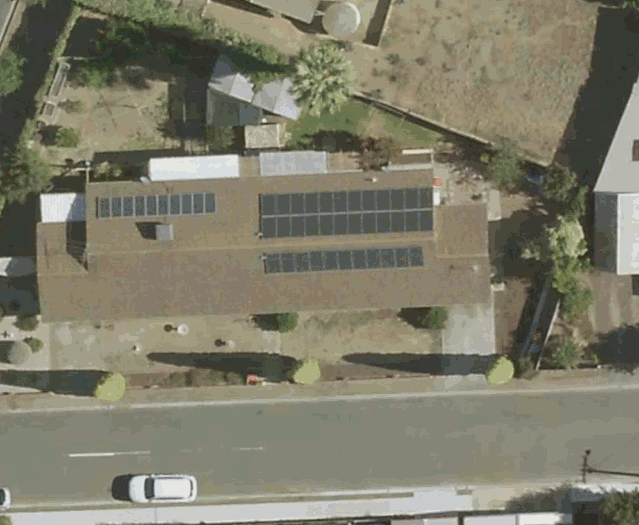

Finally, good-for-nothing pencil pines prove useful as a pointer.
Palm No Sun Day
The problem with this place was a massive palm tree that intruded on the fence line. It put some shade across the lawn in high summer, but in high winds it clattered and dropped dead fronds.
What was more irksome was the huge swathe of shade it painted across the house as the days shortened and precious sun hours became scarcer.
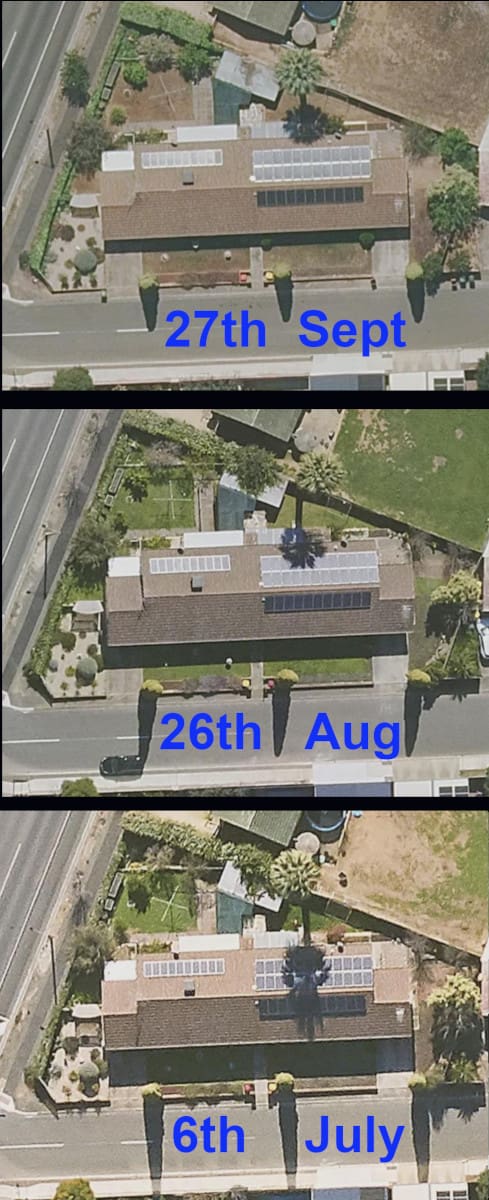

Shadows stretch through the year, so it’s not always apparent where they land when you’re on the roof to measure up.
Shade Is A Solar Killer
As autumn encroached it was soon apparent the entire northern array was being hobbled because I’d simply wired it as two horizontal rows.
As the morning shade killed off the most western panel, the whole string was affected. It got worse as the shadow swept across more panels, so a solar salesman might have tried to ameliorate the issue with optimisers or micro inverters.
The shame of it was we soon lost a good deal from both top and bottom rows.
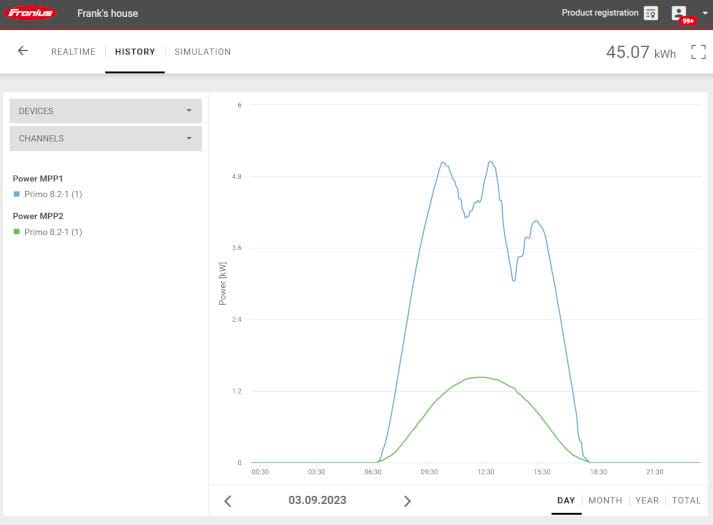

Production ramps up until the shade hits, peaks again at midday when both array are “equally” shaded & then peaks once more as the shade clears the array
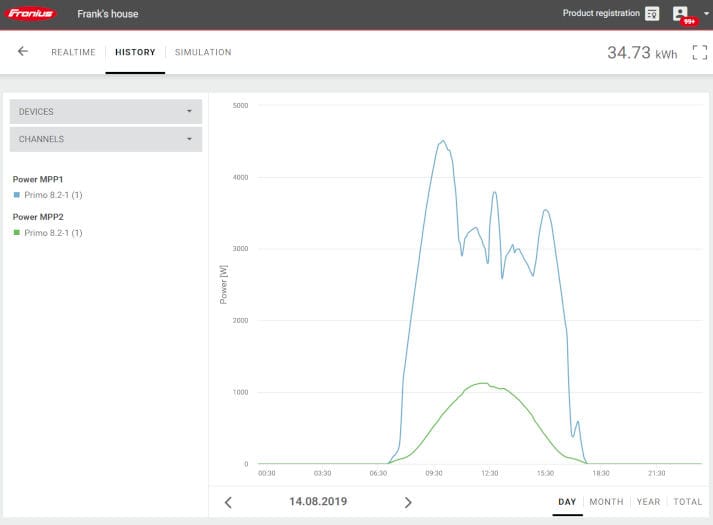

As more of the array becomes more shaded deeper into winter, the MPPT algorithm finds more work to do and the shade even reaches the southern array. (green trace)
Wired For Success
The solution to help maintain output was to rearrange the array wiring.
By adding a couple of extra cables I split the array 12 left and 12 right, instead of straight top and bottom rows. Although the shade remained, at least one of the parallel strings would be kept in the sun to perform at its best.
This also meant the MPPT algorithm would maintain higher output as it constantly scans for the best combination of current and voltage from the fully exposed panels, while the shaded array would just contribute what it could.
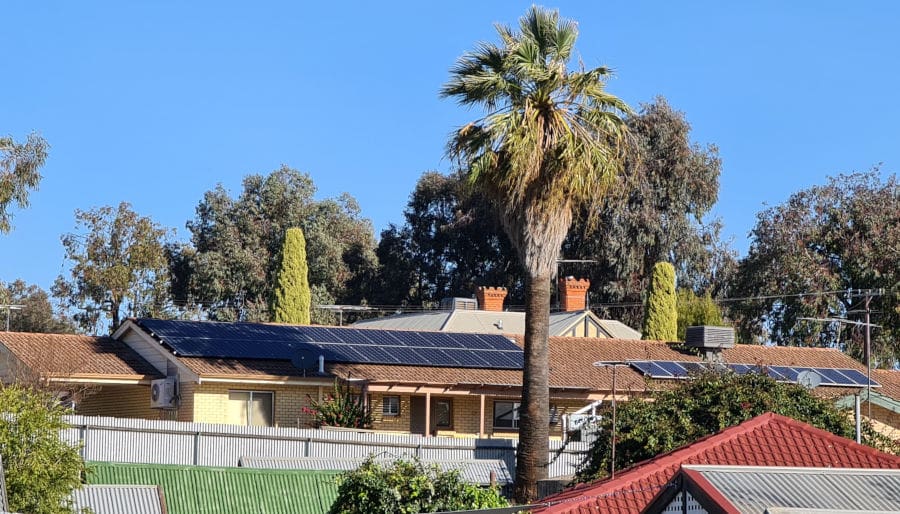

The array might have dwarfed the adjoining neighbours, but the mid-afternoon shade still kills it.
Know Where The Shadows Fall
While shade can’t be avoided sometimes, a few customers I’ve met view the trees responsible as vertically stacked firewood. Solar becomes the reason for a chainsaw massacre.
If I were to do this job again today, it would have a 10kW inverter and more solar on the south side to reach 13kW in total, or possibly 20kW of solar with a battery and a new roof over the patio.
When you’re looking to get solar power it’s worth getting it right from the outset and this might mean you have to give your sales or install team some local knowledge. It pays to have some idea about where the shadows fall on your roof.
An additional factor is whether any trees are deciduous: solar installed in the middle of winter when the local trees are free of leaves could be compromised unwelcome summer shade once the green canopy grows back.
Ask For A Solar Shade Assessment
Want to know how much your solar would be affected by local trees? Ask your installer for a shade assessment.
Your installer will have used a Suneye or Solar Pathfinder device when they gained their solar accreditation, however it’s likely the only time.
With advances in digital tools, most quoting platforms offer virtual shade analysis using aerial images. It’s not quite as accurate but much faster and cheaper, much like solar itself.
Another option is incorporating panel-level optimisation into your solar: smart electronics that optimise the power of each panel in a string independently. Read more on this here.






